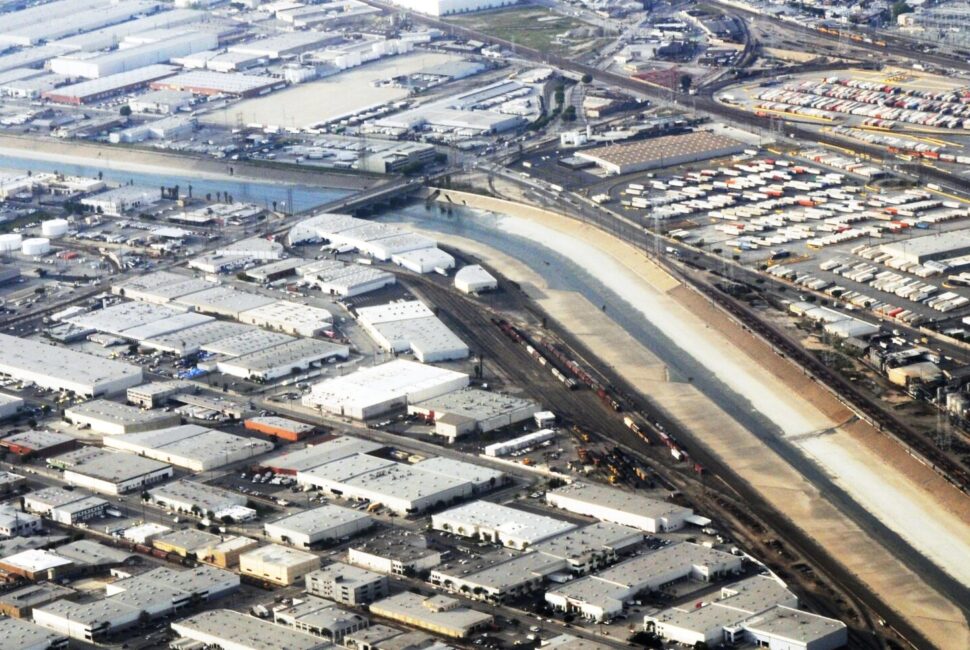New California Industrial Stormwater Permit Requirements – Effective July 1, 2020

Significant changes in compliance requirements for many facilities subject to the California National Pollutant Discharge Elimination System (NPDES) Industrial Storm Water General Permit (IGP) are fast approaching. California’s current IGP expires on June 30, 2020.
Effective July 1, 2020, facilities located in the Los Angeles, Santa Ana, San Diego, and San Francisco regions may be subject to receiving waterbody quality-based standards. Facilities in these regions must assess Total Maximum Daily Load (TMDL) applicability and amend their Storm Water Pollution Prevention Plan (SWPPP) to avoid potential costly fines. Amendments to the IGP include:
- TMDL Implementation Requirements
- Statewide Additional Compliance Options to Incentivize for Storm Water Capture and Use
- EPA’s Sufficiently Sensitive Analytical Method Requirements
These amendments are issued by the State Water Resources Control Board (State Board) and expanded upon below.
TMDL Implementation Requirements
TMDLs are established in the Regional Water Board Basin Plans (Basin Plans) and are the maximum pollutant loads from an identified source that a waterbody can receive while attaining water quality standards. This amendment requires Responsible Dischargers (i.e., facilities which discharge TMDL-specific pollutants to an impaired receiving waterbody) to comply with TMDL-specific Numeric Action Levels (TNALs) and/or Numeric Effluent Limitations (NELs). Specific requirements are found in Table E-2 of the amended IGP.
- TNAL
Similar to existing technology-based Numeric Action Levels (NALs), exceedances of TNALs require implementation of Exceedance Response Actions (ERAs). Some parameters will have both NALs and TNALs, and must be tracked concurrently. Failure to implement the required ERA process once a NAL or TNAL exceedance occurs constitutes a violation of the permit and can result in potential fines or third-party citizen lawsuits, similar to prior to this amendment. - NEL
If a facility has a TMDL specific concentration-based limit, it becomes an NEL requirement. Currently, NELs are mainly in the Los Angeles and Santa Ana regions. Some parameters will have both NALs and NELs, and must be tracked concurrently.NELs pose significant potential implications for a facility’s compliance efforts. An NEL exceedance occurs when two or more analytical results from samples within a reporting year exceed an NEL. Further, an NEL exceedance will be an automatic violation of the IGP and subject to Water Quality Based Corrective Actions, resulting in potential agency fines (minimum of $3,000 per violation) and third-party citizen lawsuits.
Beginning July 1, 2020, all future samples must comply with the applicable TMDL concentrations.
Statewide Additional Compliance Options to Incentivize for Storm Water Capture and Use
The State Water Resources Control Board has approved two additional pathways (on-site and off-site) for facilities to demonstrate compliance with the IGP. These options were created to tackle the water supply shortage in California with the goal of refilling groundwater aquifers. To qualify for these incentives, large capture-and-use best management practices (BMPs) must be designed to:
- Capture and use the daily 85th percentile 24-hour storm event volume
- Provide a volume-based equivalent to concentration-based receiving water limitations
- Comply with applicable groundwater protection requirements (for infiltration BMPs, water must comply with drinking water standards)
Facilities meeting these BMP requirements are considered in compliance with the following components of the IGP:
- Discharge prohibitions
- NALs and ERA process
- Effluent limitations
- Receiving water limitations (TMDLs)
Facilities that are interested in taking advantage of one of these compliance options must submit a notification in California’s Stormwater Multiple Application and Report Tracking System (SMARTS) at least three months prior to initial operation of the BMP and update their SWPPP seven days prior to initial operation of the BMP.
On-Site Compliance Option
The on-site compliance option allows a facility to implement BMPs that capture, infiltrate, divert and/or evapotranspire storm water runoff. Some examples of on-site compliance options are:
- Groundwater infiltration through an on-site water body
- Large tank systems to hold storm water on-site for reuse in process water
Facilities that implement the on-site compliance option are exempt from the following IGP requirements:
- Discharges to ocean waters
- Training qualifications and obtaining a Qualified Industrial Storm Water Practitioner (QISP)
- Implementing advanced BMPs
- Treatment control BMP design storm standards
- ERA process
Off-Site Compliance Option
(Note: Not feasible for majority of industrial facilities.)
The off-site compliance option allows a facility to form a partnership with a local jurisdiction or another discharger to fund an off-site storm water capture and/or infiltration BMP within the watershed. An example of this option may be storm water diversion to a publicly owned treatment works (POTW). Although this option requires Regional Water Board approval and a 30-day public notice, it has more incentives compared to the on-site compliance option.
Facilities that implement the Off-Site compliance option are exempt from the following IGP requirements:
- Discharges to ocean waters
- Training qualifications and obtaining a QISP
- Implementing advanced BMPs
- Treatment control BMP design storm standards
- Monitoring implementation plans (Monitoring now driven by Regional Board specific to BMP)
- Sampling event visual observations
- Sampling and analysis
- ERA process
EPA’s Sufficiently Sensitive Analytical Method Requirements
This rule requires the use test methods that are sufficiently sensitive to detect and quantify pollutants at or below applicable water quality criteria, action levels, or effluent limitations. Facilities must use an analytical laboratory that can perform the sufficiently sensitive analytical methods for their pollutant parameters.
FOR MORE INFORMATION
For more information about California’s Industrial Stormwater Program, please visit https://www.waterboards.ca.gov/water_issues/programs/stormwater/industrial.html.
We can help
If you have questions, need a Qualified Industrial Stormwater Practitioner (QISP), Professional Engineer (PE) design and/or review, SMARTS assistance, or general help with your compliance efforts with regards to your IGP, please reach out to our California Industrial Storm Water expert, Brian Perdomo, by email at bperdomo@montrose-env.com or by phone at (949) 756-3163.

